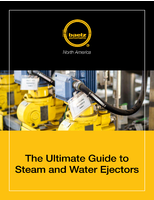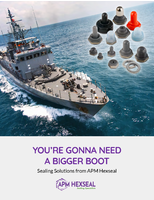Alibre Design Pounds the Pavement:
The '3D PDF'-enabled modeler put to giant use at Heathrow Airport
Richardson, TX March 12, 2007 -- Lower-priced solid modelers have become a popular choice among designers, inventors, and entrepreneurs who have discovered full 3D functionality for only about one-fifth the cost of similar 3D CAD packages that traditionally cater to the big budgets of large engineering departments. With the new ability of solid modelers to speak in 3D PDF, a new 3D-enabled version of the ubiquitous document-sharing format from Adobe, large engineering staffs are beginning to recognize the value-priced tools as ideal for collaborative work.
UK-based construction and infrastructure support provider AMEC is one of the larger companies that has put an affordable 3D CAD application to work. AMEC has a framework agreement with national airport authority to provide design and construction services to Heathrow International and other regional airports. John Albinson is the Product Development Manager to the Pavement and Infrastructure Team (P&IT).
Although Heathrow stores a great deal of their infrastructure plans in 2D format, Albinson's department, which is tasked with building new additions to infrastructure, still needed early visualization of proposed solutions in 3D. P&IT implemented a solid modeler from Alibre, Inc.
Alibre Design Professional, which costs under US$1,500, now comes equipped with 3D PDF publishing capability. For a department like AMEC's P&IT, which is not heavily invested in 3D technology, the 3D PDF capability allows everyone in the department to participate in new product development through 3D visualization, without the need to buy a slew of CAD licenses or invest in CAD training.
Models in 3D PDF files may be viewed from any angle or magnification; assemblies may include animated exploded views or sequences of steps to communicate design intent and document assembly processes. Personnel without CAD programs can read the 3D PDF files generated from Alibre Design with the free Adobe Acrobat Reader 7. "The advent of 3D PDF has made the exchange of design ideas out of the design team very easy," reports Albinson. "I now use this export facility extensively."
More Punch for the Pound
Since the software's adoption, Albinson has used 3D modeling to develop over twelve significant products in the last two years. "One of the latest and largest," says Albinson, "is the production of a test machine we call the A390, which fires a piston into objects using compressed air. The machine is used to assess a structure's resistance to impact. The machine was fully detailed in the 3D modeler."
The A390 device is heavy duty to say the least, stretching over 6 meters long, and weighing over 3.25 metric tonnes (7,200 lbs). A 1350 kg piston inside the cylinder acts as a battering ram to test the effectiveness of airport safety barriers, meant to stop errant runway aircraft.
"The airport installs a very large number of protective bollards and barriers at its expanding airports. In order to reduce maintenance, there was a need to more clearly understand the energy absorbing capacity of various protective structures and assess the performance of a new bollard-mounting device currently subject to a patent application. The A390 machine was designed so that deflection of the bollard or barrier can be measured in real time," explains Albinson.
The mammoth machine works like a compressed-air gun. The air chamber within the cylinder is pressurized by an external air source. When the 3-meter-long, 590mm-diameter piston is released via simple mechanical escapement, the result is a powerful thrust, releasing about 80 KJoules of impact energy. Both the movement of the piston and the instantaneous pressure changes are recorded by transducers, which sample at 0.5 microsecond intervals, so that the tests can be later analyzed.
An interesting design challenge involved the main piston cup seal. Machined from hard rubber, the cup seal runs in the steel epoxy-coated tube barrel. Because of the piston's tremendous load on the seal, designers added a set of inner and outer wheels for additional support.
The value-priced modeler had no problem scaling the big gun. Size mattered more to the fabricator, who had an interesting time handling and transporting the extra-large assignment. The fabricators were presented with a full set of 2D drawings with accompanying 3D pictures from the model produced in Alibre Design. The water cut steel sections were profiled using 2D export files.
According to Albinson, use of affordable 3D technology has "completely displaced" the use of hand-drawn detailed concept sketches to describing product to the rest of his team.
Additionally, the parametrics of the solid modeler generates automatic part lists, or bills of materials (BOMs), for the modeled assemblies. "I needed to produce real drawings with BOMs, while providing high quality models for product visualization," says Albinson.
Now that solid modelers have come down in price and their 3D output is more easily shared, engineering staffs have an affordable option for 3D modeling and collaboration that can take on the biggest of projects.
About Alibre
Alibre Inc. develops and markets Alibre Design(TM), the fastest growing parametric 3D solid modeling software for mechanical design and manufacturing. One-fifth the cost of comparable software, Alibre Design delivers quick ROI, ease-of-use, rich functionality and unique real-time support, and is enabling small and medium-sized businesses and workgroups to put 3D CAD on every engineer's desk, similar to utilities like Word or Excel. Alibre also delivers Alibre Design Xpress, the industry's only true 3D parametric modeler available free of charge. Alibre Design is available in thirteen languages and distributed worldwide. Founded in 1997, Alibre Inc. is privately funded and based in Richardson, Texas. For more information and for a free trial of Alibre Design, please visit www.alibre.com
About AMEC plc
AMEC designs, delivers and supports infrastructure assets for customers across the public and private sectors. AMEC employs more than 20,000 people working from a network of offices throughout the UK, US and Canada, as well as regional offices and projects worldwide. AMEC's shares are traded on the London Stock Exchange where the company is listed in the Support Services sector (LSE: AMEC.L). For more information, please visit: www.amec.com




